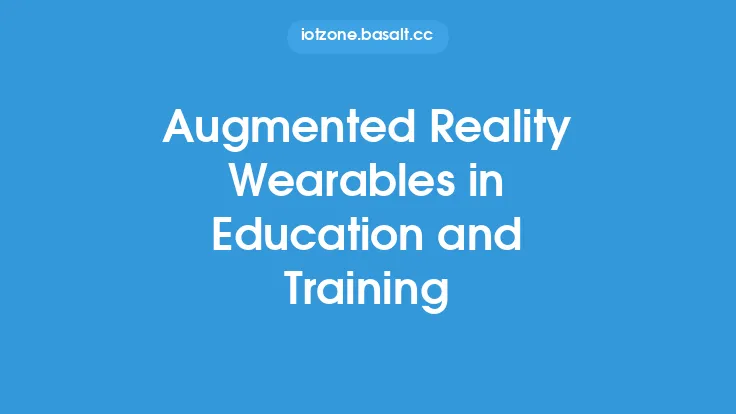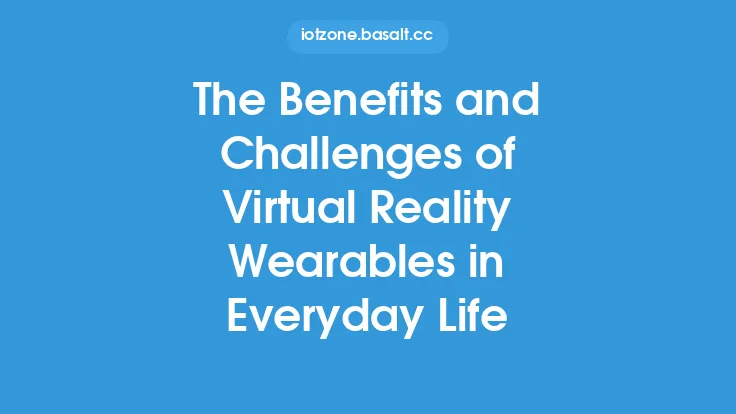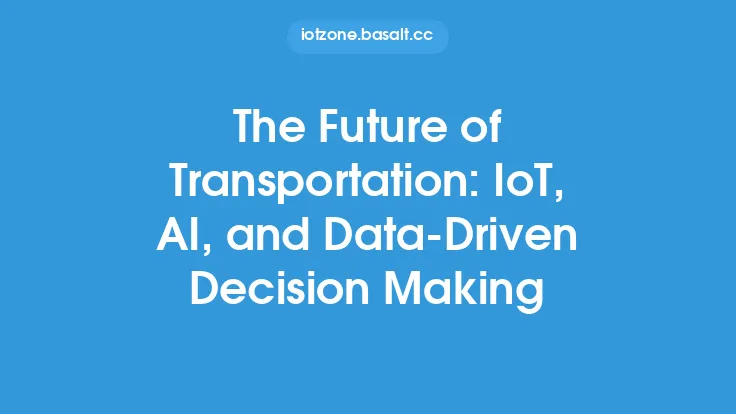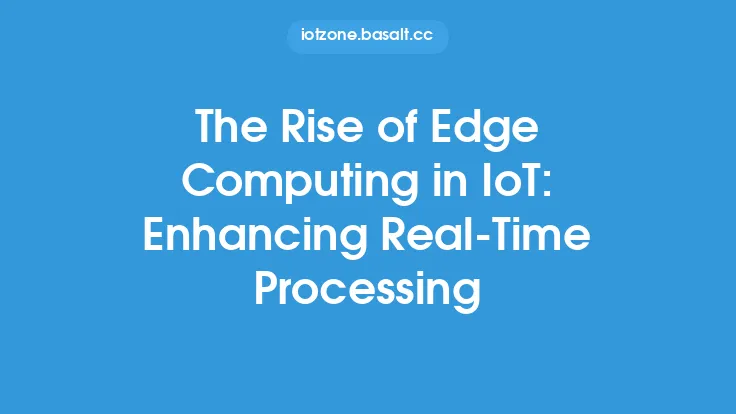The integration of Internet of Things (IoT) technology in educational settings has been gaining momentum in recent years, and for good reason. By bridging the gap between theoretical concepts and real-world applications, IoT in education has the potential to revolutionize the way students learn and interact with their environment. This article will delve into the various ways IoT is being used in educational institutions, the benefits it provides, and the technical aspects of its implementation.
Introduction to IoT in Education
IoT in education refers to the use of IoT technology to create a more immersive, interactive, and effective learning experience. This is achieved by connecting various devices and sensors to the internet, allowing them to collect and exchange data, and providing students with hands-on experience with real-world applications. IoT in education can be applied to various fields, including science, technology, engineering, and mathematics (STEM) education, language learning, and special needs education.
Real-World Applications of IoT in Education
One of the primary benefits of IoT in education is its ability to provide students with real-world applications of theoretical concepts. For example, in a physics class, students can use IoT sensors to collect data on temperature, humidity, and light, and then use this data to understand complex concepts such as thermodynamics and optics. Similarly, in a computer science class, students can use IoT devices to learn about programming, networking, and data analysis. IoT can also be used to create interactive and immersive learning experiences, such as virtual labs, simulations, and games.
Technical Aspects of IoT in Education
The technical aspects of IoT in education involve the use of various devices, sensors, and software to create a connected and interactive learning environment. Some of the key technologies used in IoT in education include:
- Microcontrollers: These are small computers that can be used to connect devices and sensors to the internet. Popular microcontrollers used in IoT in education include Arduino and Raspberry Pi.
- Sensors: These are devices that can detect and measure physical parameters such as temperature, humidity, light, and motion. Sensors can be used to collect data and provide students with hands-on experience with real-world applications.
- Networking protocols: These are standards that govern how devices communicate with each other over the internet. Popular networking protocols used in IoT in education include Wi-Fi, Bluetooth, and Zigbee.
- Cloud computing: This refers to the use of remote servers to store, process, and analyze data. Cloud computing can be used to provide students with access to large amounts of data and computational resources.
Benefits of IoT in Education
The benefits of IoT in education are numerous and well-documented. Some of the key benefits include:
- Improved student engagement: IoT can be used to create interactive and immersive learning experiences that increase student engagement and motivation.
- Enhanced learning outcomes: IoT can be used to provide students with hands-on experience with real-world applications, which can improve their understanding and retention of theoretical concepts.
- Increased accessibility: IoT can be used to provide students with disabilities with equal access to educational resources and opportunities.
- Personalized learning: IoT can be used to collect data on student learning and provide personalized feedback and recommendations.
Challenges and Limitations of IoT in Education
While IoT in education has the potential to revolutionize the way students learn and interact with their environment, there are several challenges and limitations that need to be addressed. Some of the key challenges and limitations include:
- Cost: IoT devices and sensors can be expensive, which can make it difficult for educational institutions to implement IoT technology on a large scale.
- Complexity: IoT technology can be complex and difficult to use, which can make it challenging for teachers and students to integrate it into their learning environment.
- Security: IoT devices and sensors can be vulnerable to cyber attacks, which can compromise student data and privacy.
- Equity: IoT technology can exacerbate existing inequalities in education, particularly in terms of access to devices and internet connectivity.
Future Directions of IoT in Education
The future of IoT in education is exciting and rapidly evolving. Some of the key trends and developments that are expected to shape the future of IoT in education include:
- Artificial intelligence: AI can be used to analyze data collected by IoT devices and sensors, and provide personalized feedback and recommendations to students.
- Blockchain: Blockchain technology can be used to secure student data and provide a transparent and tamper-proof record of student learning.
- Extended reality: Extended reality technologies such as virtual and augmented reality can be used to create immersive and interactive learning experiences that simulate real-world environments.
- 5G networks: 5G networks can provide faster and more reliable internet connectivity, which can enable the widespread adoption of IoT technology in education.
Conclusion
In conclusion, IoT in education has the potential to revolutionize the way students learn and interact with their environment. By providing students with hands-on experience with real-world applications, IoT can improve student engagement, enhance learning outcomes, and increase accessibility. While there are several challenges and limitations that need to be addressed, the benefits of IoT in education make it an exciting and rapidly evolving field that is worth exploring. As technology continues to advance and improve, it is likely that IoT will play an increasingly important role in shaping the future of education.





